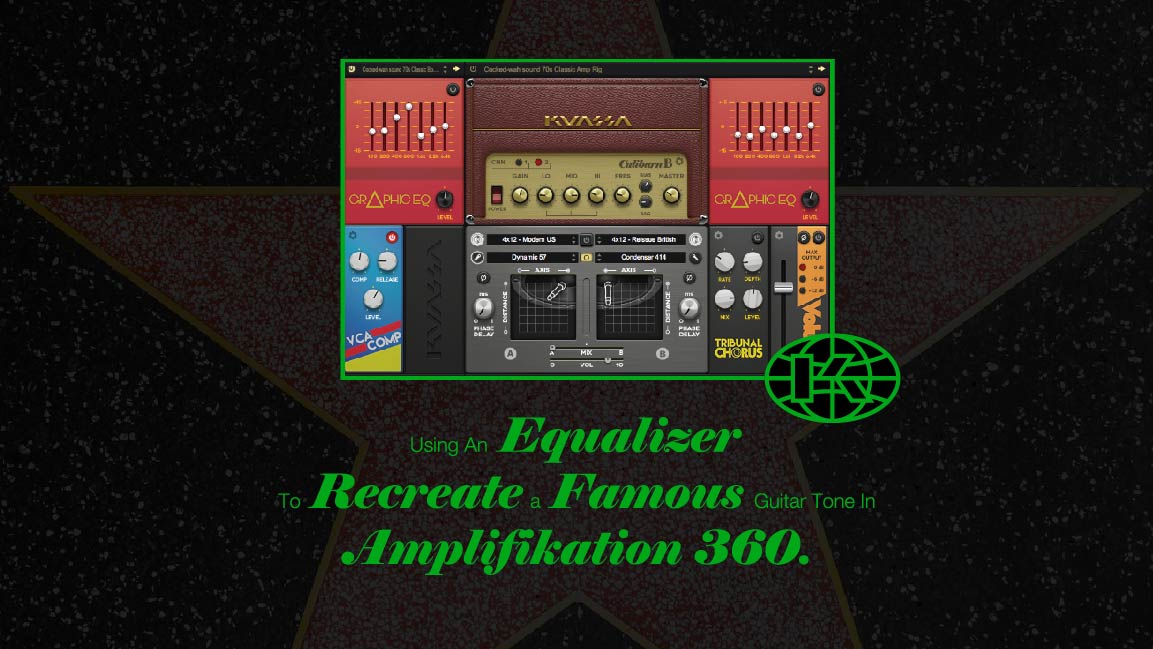Most of the time, shaping guitar tone using the amplifier’s EQ section, which normally placed after the preamp section is enough. But shaping your sound using an EQ pedal in front of the amp, hence before it’s going into the preamp section, is also a common approach to get more of your guitar sound and make it fairly unique.
RESHAPE YOUR GUITAR SOUND!
Equalizers are an essential part of every musical production content and there are numerous ways to use it and make it work.
Shaping the guitar tone using only the amp’s EQ section, also known as a “tone stack” is usually enough, but in many cases, guitarists are looking for a more detailed sound and additional equalizers in pedal or rack format are the answer.
Using the equalizer after the power amp section and even further post-processing the signal in the PA console, studio mixer channels, or your DAW equalizer plugins for fine-tuning or cutting off unpleasant frequencies and making it more detailed is a common technique.
Today we will use the FREE Efektor GQ3607 Graphic Equalizer: https://www.kuassa.com/products/efektor-gq3607-graphic-equalizer/
in the new A360 Amp Simulation Software, to reshape our tone and recreate famous guitar sounds.
Amplifikation 360 is free to download here: https://www.kuassa.com/products/amplifikation-360/
Equalizer placed in front of the amp simulator could dramatically change the overall saturation of the preamp. The fundamental frequencies could be shifted in a way that will change the dynamic and most important the frequencies’ spectrum.
We will recreate the sound of the famous Rockman Guitar Preamp, using an EQ, Compressor, a British Amp Sim for the base of the tone, Chorus, Delay, and Reverb to finish the full signal chain.
The Rockman is a headphone guitar amplifier. The original Rockman was developed and built by Scholz Research & Development, Inc., a company founded by Tom Scholz, who is also the founder and a key member of the rock band Boston. Scholz Research & Development was sold to Dunlop Manufacturing, Inc. in 1995. Dunlop continues to manufacture the Rockman Ace, and Tom Scholz’s signature still appears on the unit.
Source: Wikipedia https://en.wikipedia.org/wiki/Rockman_(amplifier)

Image source: Wikipedia
It’s worth mentioning that the same feeling and sound could be achieved with Wah Pedal in a fixed position, but using an equalizer is the better way. Having more frequencies to adjust gives us more control over the sculpting process of the tone.
You can hear this specific sound in many bands and guitar players. A few worth mentioning are:
- Tony MacAlpine
- Def Leppard
- Joe Satriani
- And many more. Mostly bands from the 80s
There are modern speed metal and shred oriented bands who utilize the same guitar tone for their fast and precise guitar solos.
Here we take the same approach to reshape the signal with an EQ before the preamp of our amp, then adding a compressor to squeeze more sustain and gain from the amp and also to smooth out the saturation.
 Using a 7 band EQ in front of the amp and making a few drastic EQ changes as follows:
Using a 7 band EQ in front of the amp and making a few drastic EQ changes as follows:
- Lowering the 100 Hz removes the flabbiness of the low end and tightens up the lower register of the amp.
- Decreasing the next frequency: 200 Hz, helps to remove some resonance.
- A little boost at 400 Hz is reshaping the low mids to retain somebody that we lose cutting the two lower registers.
- A major boost at 800 Hz is where the tonal changes are happening. This brings vocal-like properties and makes the guitar to cut through also it makes the tone unique and distinctive.
- A cut at 1.6 kHz is to remove some nasal character from the signal.
- Slight cut at 3.2 kHz is needed to remove some sharpness.
- Untouched
Another Equalizer after the Amp section, but before the cabinet, is added to reshape the signal after the power amp and fine-tune the overall tone even further.
Before finishing the full signal chain of the famous Soloist, Efektor Chorus is added after the cabinet to complete the chain. As you can see the original unit has Chorus effect built-in and it was used in many recordings switched on.

Image source: Wikipedia

After analyzing the guitars in the classic track “More Than A Feeling” by Boston, another Container module is added at the end of the chain to create the “Doubled” guitars in the chorus section.

You can get the same effect of double-tracking, using two delays and a panner module. One of the delays is set to 38ms and panned hard left, the other is 0ms, panned hard right. The Wet signal is at full. This studio trick emulates the sound of the same guitar part recorded on to another track, then panned left and right and played back simultaneously. But instead of playing the same part two times, we use the Efektor Delay 3606.
As a final step we have a full bank for our Amplifikation A360 amp simulation and including the guitar tones in the song “More Than A Feeling”
It has 6 stored live scenes that should be enough in any recording or playing live situation.
From clean, rhythm, and solo sounds.




